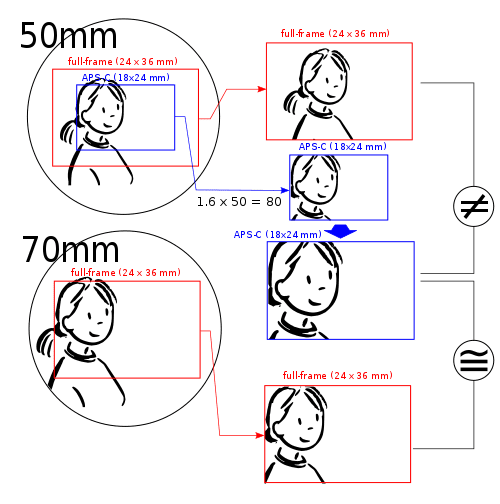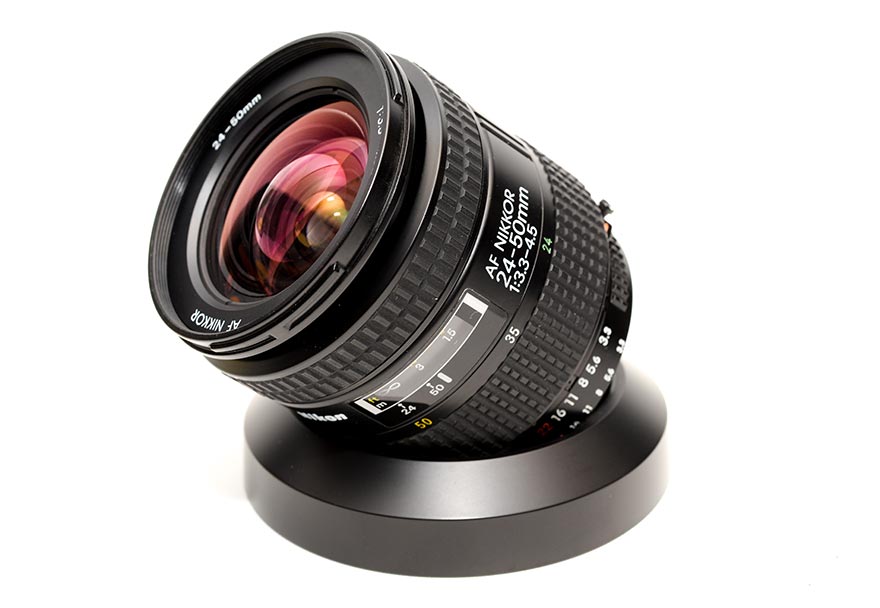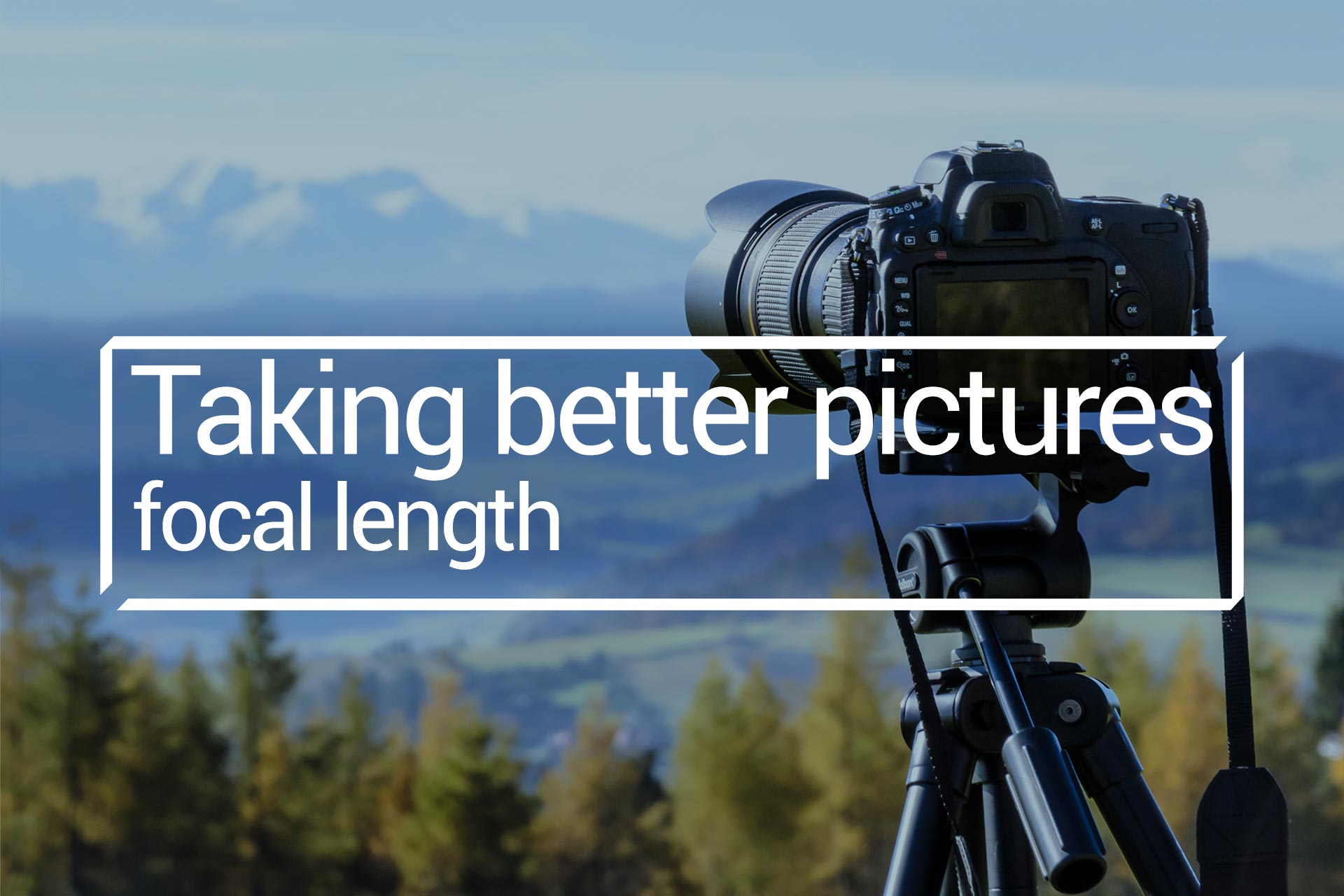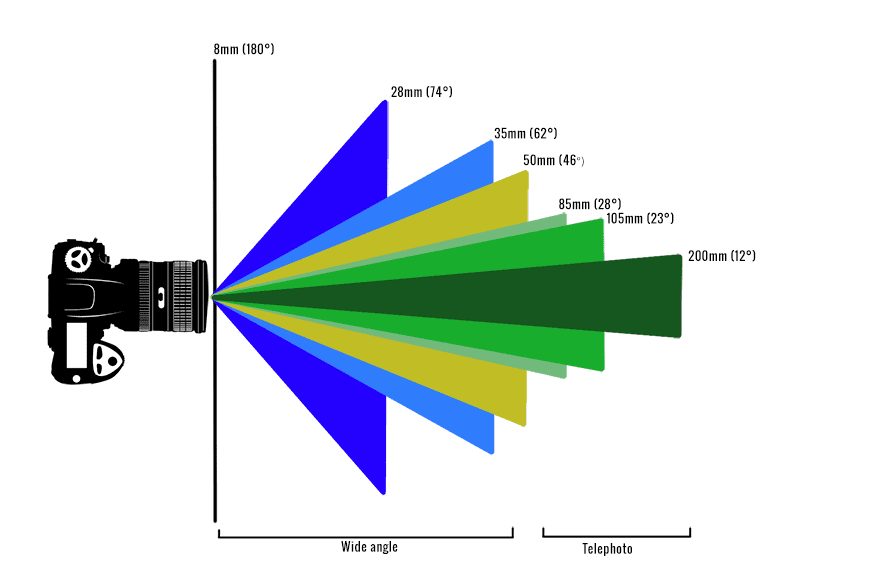This new post continues the mini-series where we introduce and explain concepts useful for taking better pictures. After exploring the exposure triangle, and learning about camera settings, it’s time to look at the main piece of any camera: the lens. If you would like, here is a primer on how a camera works, and one about the camera lens.
Funnel of light
The primary job of a lens is to collect the light from the scene, and focus it onto the film or sensor of the camera. The lens effectively acts like a funnel: the wider it is, the more of the scene it will be able to fit onto the film. This property is called angle of view, and it is related to the focal length.
Focal length
Camera lenses are categorized based on their focal length, which is measured in mm (millimeters). This measure is then compared to the size of the diagonal of the film or sensor in the camera, also measured in mm. Hence you have three cases, and thus three categories:
- normal, where the focal length is approximately equal to the film diagonal
- wide-angle,where the focal length is shorter than normal
- long or telephoto, where the focal length is longer than normal
Angle of view
As we mentioned above, focal length and angle of view are related, and this is how:
- normal lens has a natural field of view, equivalent to the human eye, which is approximately 50° left-to-right
- wide-angle has a wide field of view, which embraces more of the scene, hence minimizes details (think peephole)
- long or telephoto has a small field of view, which embraces less of the scene, hence magnifies details
Everyday focal length
Let’s see what all this means for the everyday photographer. You may know that a very popular film (and hence, camera) format was the 35mm. Because of its popularity, it became the standard against which we measure focal length today. In the 35mm world, a normal lens has a length of 50mm. Anything longer than that, is considered telephoto, and anything shorter is considered wide angle. So here is the simple guide:
- 50mm is a normal lens
- <50mm is a wide-angle lens
- >50mm is a telephoto lens
Crop sensor and equivalent focal length
Several digital cameras have a sensor that is smaller than the original 35mm (36x24mm). This means that these cameras only use a smaller area of the original 35mm surface, and this results in an increase in the perceived focal length. To make things easier, there is a simple factor that you can apply to your lenses to calculate the equivalent focal length of your lens. Looking at the major DSLR manufactures, Nikon calls it DX format and has a 1.5 factor, while Canon calls it APS-C format and has a 1.6 factor.
So, if you have a Nikon DX model, like a Nikon D3400, then a 50mm lens will effectively behave like a 1.5 x 50 = 75mm lens. Similarly, a Canon EOS Rebel T5i with a 50mm will behave like a 1.6 x 50 = 80mm.

Comparison between full-frame and APS-C format. Explaination why a 50mm lens on APS-C amounts to a 80mm in full-frame. Credits at the bottom of this page (*).
A crop sensor boosts the focal length in the telephoto range, which can be seen as an advantage. On the other side, it undermines the ability of the camera to go as wide as a full frame camera for the same reason.
Manufacturers produce both full frame lenses and crop sensor lenses. Usually, crop sensor lenses are cheaper, but they only work on crop sensor cameras. On the other hand, full frame lenses are more expensive, but work on both full frame and crop sensor lenses. Neither is better or worse: a great lens is a great lens, and you just need to read reviews and see your results. But it is important to understand the implications of one over the other.
Prime and zoom lenses
Let’s now look at the distinction between prime lenses and zoom lenses. A prime lens is a fixed focal lens, meaning that it stays at a set focal length. They come in all three ranges, and the most commonly used are probably the 35mm, 50mm, 85mm. The main advantage of being a prime lens is their sharpness, and often their speed (as they can have wider apertures). The cost can vary. The main disadvantage is their fixed focal length, which requires you to change the lens, should you need a different focal length.

A zoom lens offers a range of focal lengths. The ratio between the longest and the shortest focal lengths offered is called zoom factor. For example, a lens that has a range from 28 to 300mm has a zoom factor of 10.7x. The main advantage of zoom lenses is their flexibility. The main disadvantage is weight, sometimes cost, and they are generally not as sharp or fast as a prime lens of comparable price.
Conclusion
In this post we have explored focal length of the main component of a camera: the lens. We have looked at how focal length and angle of view are related to each other, and how the camera sensor size affects the equivalent focal length of a given lens. In my next post we will explore when to use a particular focal length, with a practical frame of reference and useful tips for your next photographs.
Credits
- Black and White Digital Camera Silhouettes Vector from vector.me
- (*) Rama (Own work) [CeCILL or CC BY-SA 2.0 fr], via Wikimedia Commons






